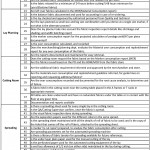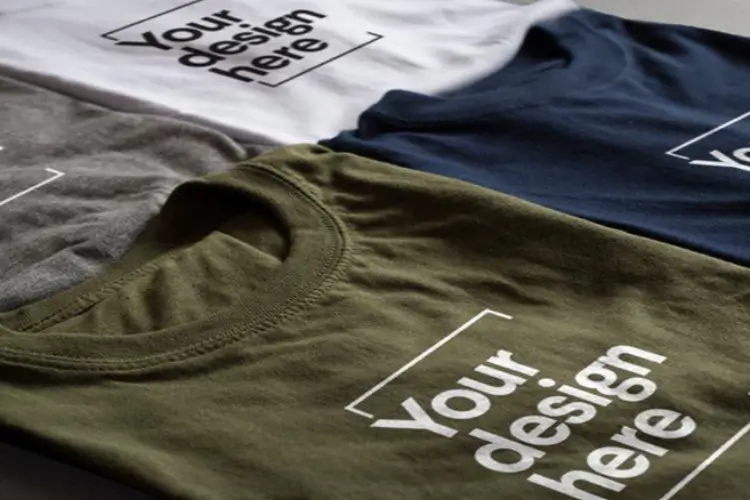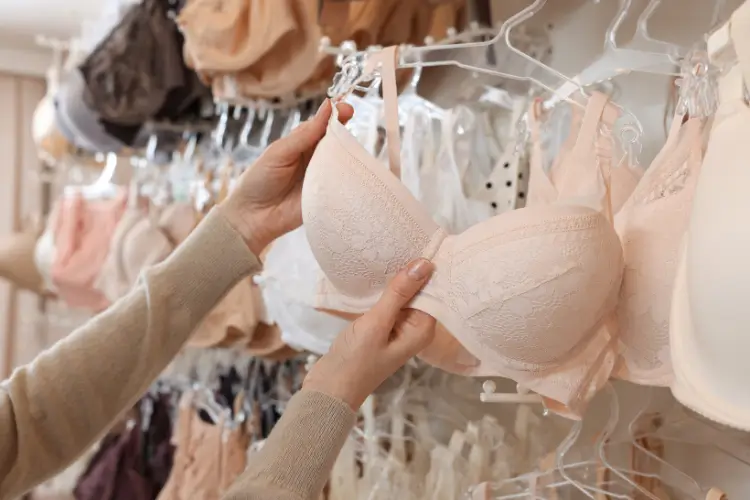Fabrics warehouse and Cutting Section Best Practices in Apparel Industry
Garments best practice in the Fabrics area and Cutting section: A best practice is a methodology, technique, or system that has been accepted as superior to any alternatives because it produces the best results because it has become a standard way of doing things. This article includes two sections manufacturing best practices of garments manufacturing factory, sections activities are Fabrics preparatory procedures up to cutting and cutting procedures before cutting. Hopefully, after reading this article you will have a good idea of Fabrics Warehouse and Cutting Section Best Practices in the Apparel Industry.
Best Manufacturing Practice for Fabrics Preparatory Procedure in a Garments Factory
There are lots of work that needs to be done before cutting, fabrics inspection, shrinkage- distortion, color- shade control, etc. Here I am giving all procedure sequence wise in below.
A) Fabric Store
- Space to keep a roll separately (E.g. Fabric roll on a rack)
- Available space to keep head-ends
- Availability of pallets (suggested for plastic/non-wooden pallets) to keep fabrics roll
- Good condition, ventilation store area, and keep a stack of fabric rolls prevent direct heat, sunlight/dust, etc. & humidity
- Fabric rolls are stored as per shade group base on mill packing list/maker after wash blanket
- Uses of Bin card mentioning style & shade name in a roll stack
- Reporting of fabric roll keeping by logbook in a soft or hard copy
B) Fabric Inspection
- Availability of Lightbox/ Lightroom (Requirement CWF- 100 FCL)
- Availability & sufficient no of Inspection m/c. sewing m/c, defect, display board, notice board
- Availability of relaxation m/c. / area / racks
- Record Fabric roll inspection report (covering packing lists from the supplier all shade groups in a blanket) & defect matrix
C) Fabric Shade Group
- Available of (2 sets) before wash & after wash Blanket preparation details and records
- The proper size of shade blanket as per buyer requirement
- Records & availability of color continuity card (after wash blanket)
- Sufficient space for Blanket storage & easy excess
D) Shrinkage, Distortion, Skew test, CSV
- Keeping records, test specimen & maintaining 100% shrinkage & distortion test procedures as per buyer Requirement for stretch fabric.
- Keeping records, test specimen & maintaining 30% shrinkage & distortion test procedures as per buyer Requirement for non-stretch fabric.
- Use of standard tools for marking & measuring shrinkage (AATCC 135) & distortion (AATCC 179 opt 1)
- Maintaining conditioning & relaxation procedure before shrinkage measurement.
- Keep a record for skew test
- Maintaining CSV / SCS check on 100% fabric roll from packing list (non-denim)
E) Operations
- 5S implementation
- Sufficient manpower
- A computer for mail communication & data entry
- Sufficient sewing m/c for a blanket & shade band making
- Notice, SOP & defect display board
- Defect analysis & Pareto analysis
Cutting Best Practice
Cutting is a sensitive process in garments manufacturing. Garments measurement and sewing depend on cutting accuracy. Here I am giving a checklist of the best cutting practice of apparel manufacturing, below data would help you to about cutting procedure best practice in apparel manufacturing.
Critical Path
- Is the critical path system being followed?
- Is there software used to create the critical path? (Provide the name of the software in the remarks column)
- Is the pattern manipulation and marker ratio calculations done before Fabric is delivered?
Width Batching
- Is the fabric width checked as per the A-Z manual for every roll?
- Is the fabric width recorded and provided to the lay planning dept. with the shrinkage, shade, and length reports?
- Is the width batching report available?
- Are new yield calculations done after the width batching? (Provide reports). Is the reason for the change in the yardage yield documented?
Length Confirmations
- Are all the rolls checked for length and documented?
- Is the fabric shortage addressed to the Purchasing Department?
Shrinkage and Shading
- Are all the fabric rolls checked for the shading and records maintained?
- Is the fabric shrinkage tested for each dye lot of the fabric and records maintained?
- Is the A-Z manual fabric checking process followed for the shrinkage and shade checking?
- Does the factory prepare an additional color continuity card?
- Are the fabric shrinkage and shade SOP available and followed?
Fabric Relaxation
- Is the fabric relaxed naturally and the relaxation time documented as per the customer manual?
- Is the fabric relaxation historical data/information maintained and used for reference on actual relaxation for every type of fabric?
- Is there a relaxation machine used for the fabric relaxation process?
- Is the relaxation report available?
- Are the relaxed fabric rolls placed on shelves with one relaxed roll per shelf?
- Is the fabric relaxed for a minimum of 24 hours before cutting? (48 hours minimum for Lycra/Elastane fabrics)
Lay Planning
- Are leftover fabrics calculated in the MCR (Material Consumption report)
- Is the balanced fabric documented and used for accounting in case of re-ordering?
- Is the lay checked and approved by authorized personnel from Quality and technical
- Are the lays planned as small size and big size combination until you derive at a single size marker, if not what is the alternate process?
- Does the lay planner take into account the fabric inspection report details like shrinkage and shading; and width batching report
- Is the marker consumption report for the projected calculation of yardage yield (YY) per piece documented?
- Is the over-consumption calculated, and recorded?
- Does the merchandising/planning dept. evaluate the Material over consumption and replenishment report for any over-consumption of the fabric.
- Are the reports documented and maintained for easy retrieval?
Cutting Room
- Does the cutting room request the fabric based on the Marker consumption report? (MCR)
- Are the fabrics issued based on the PO and the BOM/MCR from the fabric store?
- Is the additional fabric requirement informed and approved by the merchandiser and store?
- Are the materials over consumption and replenishment guideline referred, for guidelines on reporting and requesting additional fabrics?
- Are the over consumptions recorded and documented for the root cause analysis, to determine the cost of failure?
- Is fabric held in the cutting room near the cutting table placed in the A-frames or Tracks in the appropriate manner?
- All tables are clean underneath and have no redundant fabrics under the table or in contact with the floor at any given time.
- Documentation and reports available
Spreading
- Is there a spreading sheet used for every single layer in the cutting room?
- Is the QA/Cutting Supervisor confirm, once the fabric is spread.
- Is the visual fabric inspection done during spreading?
- Are the separation papers used for the different colors in the same spread?
- Is the spreading sheet maintained with all the details of the Roll of fabric to be used; and is the copy of the ticket that comes off the roll of fabric, attached to the spreading sheet.
- Is marker Vs cut report prepared, to analyze the fabric consumption after cutting
- Are spreading parameters set for the automated spreading machine
- Is there a library of fabric tension for spreading available for future references?
- Is the underlayer plain paper used for the manual cutting of the lay?
- Is the perforated paper used for the automated cutting equipment of the lay?
- Is an end loss allowance of 1/2 inch (on either side) maintained in the lay during cutting?
- Documentation and Reports available
Recuts
- Are the re-cuts documented and recorded for further calculation of actual yardage yield, and assigned correct reason?
- Is the T2’s performance analyzer
- Are faults/errors identified and reduced with corrective action plans?
- Documentation and Reports available
Issuance of cut goods
- Is there an inward/outward procedure and format for the cut panels issued to the sewing section?
- Is the sewing section in-charge know that the order is complete in terms of cutting, printing, embossing, embroidery, or any other processes involved before sewing with the document?
- Does the sewing section in-charge sign on receipt of the cut quantities taking control of the order quantity?
Fabric Returns
- Is the left-over fabric returned to the store and documented daily?
- Is the left-over fabric put back in the store/inventory for carryover orders?
- Documentation and Reports available
Fabric Usage
- Does the cutting room calculate the final yardage yield based on total fabric usage?
- Are the following reports involved in deciding the final yardage yield usage, Marker Consumption Report (MCR); Marker Vs Spreading Report; Spreading Sheet; Re-cut quantities?
- Documentation and Reports available
Key Performance Indicators
- Does the process of ordering, have specific guidelines, and measurable?
- Does the factory maintain the records for 24months once the order is shipped?
- Are the factory cutting room performance and efficiency calculated and documented?
- Is the actual yardage yield calculated after an order has been shipped?
This Content Also Refers to
- Good Practice for Garments Fabrics warehouse
- Best Practice for Fabrics cutting process in Garments
- Benchmarking Garments Fabrics warehouse
- Benchmarking Fabrics cutting section



